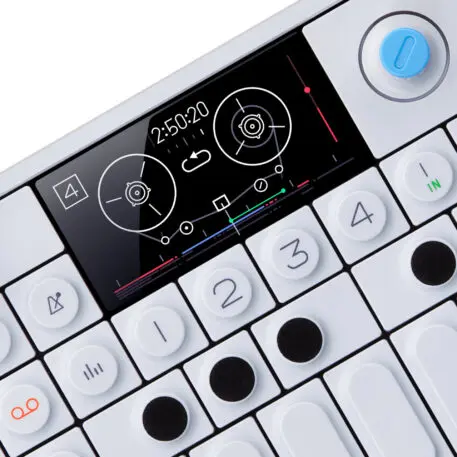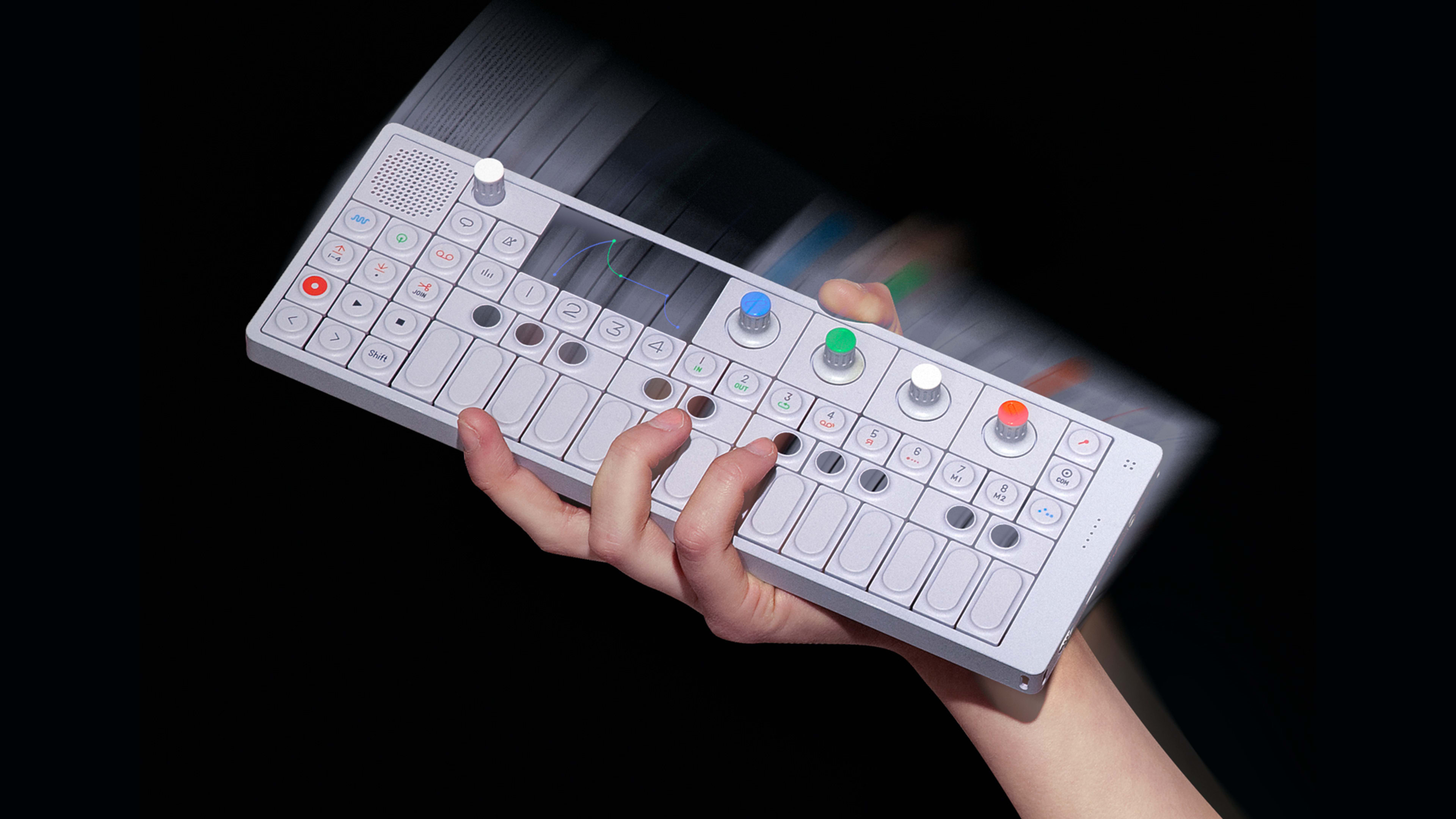Last year on the music gear trading site Reverb, the most sought after instrument (both new and used) was a little white synthesizer called the OP-1, made by the Swedish tech developer and design house Teenage Engineering. It was the second year in a row that this honor belonged to the OP-1, which debuted a decade ago and remains Teenage Engineering’s centerpiece product.
The OP-1 put Teenage Engineering on the map in music tech circles, and sales of the device powered the company’s move into an array of other weird and wonderful gadgets, including a minimalist home speaker, a series of “pocket” synthesizers, a Bauhaus-inspired modular speaker-and-light system (in collaboration with Ikea), and the Playdate handheld gaming device, which it designed for Panic.
Meanwhile, musicians began catching on to the OP-1’s audio and design aesthetic–including such famous ones as John Mayer, Thom Yorke, Deadmau5, Skrillex, and Trent Reznor.
What is it about the diminutive keyboard that’s pushing it rapidly from a cult item to a classic?
The OP-1’s looks are deceiving. Its size and simplicity of design make it seem toy-like, similar to the little Casio VL-1 keyboard-calculator combos that arrived from Japan in the 1980s. (Actually, one of Teenage’s cofounders, Jesper Kouthoofd, has said the VL-1 had influenced the design of the OP-1.)

‘Because we wanted one’
The OP-1 was one of those special tech products that the world didn’t know it needed until it arrived. Teenage Engineering held no focus groups before committing to building and marketing the OP-1. They just had a hunch.

“I think we very much did it because it was something we wanted ourselves, and then we hoped there would be some other similar people out there,” Möllerstedt adds. “I mean, we really hadn’t any clue how many we would [sell] and what would happen.”
Teenage Engineering, which was founded in 2005, originally announced the OP-1 at the Frankfurt Musikmesse show in 2009. The following year, the company showed off a prototype of the device at the NAMM Show in Anaheim, California. Excitement over the product began to build. At the time, Engadget said the little OP-1 “might just be the most anticipated synthesizer in the history of mankind.”
The OP-1 was finally released the following year, when Teenage had all of nine employees. In the beginning, Möllerstedt tells me, the company assembled and packaged all outgoing devices at its offices in Sweden.
As the order numbers grew, it became clear that the “hunch” of Möllerstedt and his cofounders (Kouthoofd, David Eriksson, and Jens Rudberg) had been correct. Even after the OP-1’s launch, people compared it to a toy, and they still do. But Möllerstedt and company hardly take this as an insult–quite the opposite.
“I think that’s great, because toys are fun, but it’s serious toys that you can create serious stuff with, and they’re well-built, and built to last,” he says. The first hint consumers got that the OP-1 was not a toy was its $849 price tag at launch.

Even still, the market for the OP-1 continues to thrive. A gadget released more than a decade ago that still remains so relevant–technically and musically–is a rarity.
A creativity machine
More than anything else, Teenage Engineering, which now has more than 50 employees, meant the OP-1 to be a creativity machine, a device musicians and producers can grab to quickly capture musical ideas. In an age when almost all music is recorded using software on computers, the OP-1 lets musicians perform and record on a single self-contained device. It even has its own speaker.
Teenage Engineering cofounder David MöllerstedtIt’s still amazing to hear the music people are making with our instruments.”
To many musicians, this was a novel and appealing idea. As transformative as music programs such as Avid’s Pro Tools and Apple’s GarageBand have been, they bring their own issues. If you’ve ever used GarageBand, you know that you can spend hours playing with its loops, effects, amps, and virtual instruments. The menus and presets are so dense with options as to be overwhelming. It can feel like there are a million things to do other than actually performing and recording music.
For many people, the OP-1 provided a refuge from the sensory overload of computer-based music. “There’s a real feeling of restraint, of limiting the tweakable parameters only to the essentials so that you’re never diverted from what matters–making music,” wrote Paul Nagle on Sound On Sound in a 2012 review.
The device’s recorder function–presented with a cool “tape reel” motif in the display window–offers four tracks, and only four tracks, to record the OP-1’s drum, bass, and synth sounds. (You can see the basic process in this video.) Each key plays one tone and one tone only, and they’re not touch sensitive. And going back and endlessly trying to improve on that first take is not easy to do on the OP-1–so musicians are forced to get mentally focused on making that first “in the moment” take a winner. The OP-1 isn’t computer-friendly: There’s no MIDI port. And while there’s a USB port, it’s meant mainly to export whole multi-track recordings done on the OP-1.
This was all by design. “We wanted to push decisions and move people forward,” Möllerstedt tells me. “We spent a lot of time thinking [about] what is the right box to give people to play around inside–to give people just the right amount of freedom.”

But he adds that the hardware and software design isn’t exactly the end product.
“The dream, I think, is always to do the tool and then hear the creations other people are doing with it,” he says. “I think it’s still amazing to hear the music people are making with our instruments.”
Tech products that gracefully unite rich functionality and cool design are always welcome: That’s the big reason Apple is the most valuable tech company on the planet today. The OP-1 embodies that kind of harmony, too, but for musicians it offers something beyond that–a way of working that has a point of view. Maybe its success is an example that makers of all sorts of tech products can take a lesson from.
Recognize your brand’s excellence by applying to this year’s Brands That Matter Awards before the early-rate deadline, May 3.
